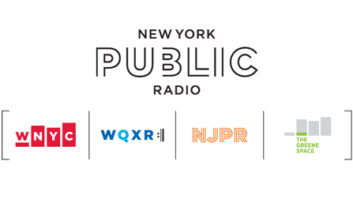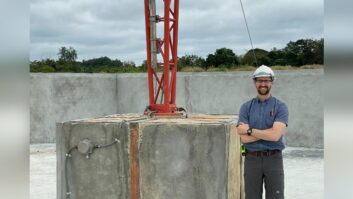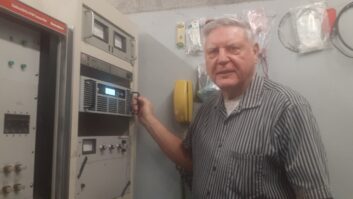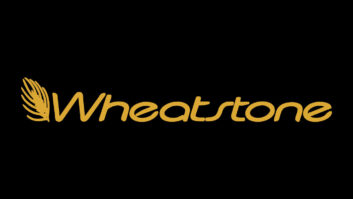The author is senior director, broadcast business development for Xperi. This commentary is from the Radio World ebook “HD Radio Best Practices 2025.”
We have come a long way since 2005, the year HD Radio commercially launched. Today, HD Radio receivers are implemented in more than 110 million vehicles, and HD Radio rollout is approaching 60% of new cars shipping each year in North America.
As HD Radio technology has advanced, so has radio’s ability to leverage it to optimize its benefits. But, as with all technology, there is always more to know and understand about the HD Radio digital air chain. So, we thought this would be a good time for a refresher on transmitters and transmission, as well as to offer some insights into the potential impact of the latest Federal Communications Commission proposals and decisions.
Let’s start with what broadcasters need to know to get the most out of their current HD Radio transmitters:
- FM transmitters for HD Radio operation typically use manufacturers’ Class C analog designs with the bias adjusted to Class AB amplification for better linearity over a broader RF bandwidth. This modification is crucial for HD Radio, which simultaneously transmits digital and analog signals. To achieve this, transmitters must handle a broader input signal bandwidth and maintain stringent signal quality, limiting noise and spurious emissions, maximizing passband flatness, phase performance, group delay flatness and mitigating discrete phase noise and AM-to-PM conversion.
- Peak-to-Average Power Ratio (PAPR) is another critical parameter for HD Radio transmitters. PAPR, expressed in decibels (dB), describes the ratio of the peak power to the average power of a signal. A high PAPR indicates that the signal has high peaks compared to its average level. Techniques such as clipping, peak windowing and scrambling are often used to reduce PAPR, which is essential for improving the efficiency of power amplifiers and minimizing distortions.
Next, with so much capability now built into the transmitter, here are some key considerations for designing antennas and combiner systems:
- Hybrid IBOC signals: The most cost-effective and optimal method for signal transmission for individual stations broadcasting with a hybrid IBOC signal is common amplification and a single-antenna array. When multiple stations are collocated at a single site, it is most economical to use several band-pass filter-balanced combiner modules to merge signals into a common master antenna, with stations combined at a minimum spacing of 800 kHz. Although technically possible, spacing less than 800 kHz significantly increases cost and complexity.
- Existing master antenna combiners: For those not explicitly designed for HD Radio operations, the primary concern is ensuring adequate voltage safety margins in the transmission line, antenna elements, power splitters and filter module hybrids.
- Consulting with a Professional Engineer is recommended to ensure that the additive peaks of all analog and IBOC signals remain within the recommended 2:1 voltage safety margin. Besides a wider channel bandwidth (400 kHz versus 200 kHz) and potentially stricter group delay flatness, the IBOC antenna implementation techniques and performance requirements are identical to those of analog FM. FM antennas typically cover the entire FM band, making these distinctions negligible. Generally, the issues related to the IBOC/analog combiner also apply to the antenna.

All that achieved, here are some ways that broadcasters can maximize HD Radio’s capabilities to provide the best audio quality and visual capabilities:
- Avoid unnecessary compression in audio storage or studio-to-transmitter link (STL) transport to achieve optimal audio quality. Linear source audio is ideal for feeding technologies that use psychoacoustic source coding for audio bitrate reduction, as these algorithms are tuned to minimize discernible artifacts. Altering the input can affect the efficiency of psychoacoustic model tuning.
- “Blending” occurs when a receiver loses the digital signal and transitions back to analog audio. The station’s digital power primarily determines the frequency of blending events. Stations at elevated digital power, –10 dBc, –12 dBc or –14 dBc (relative to analog host power), will blend less frequently than those at –20 dBc. Understanding this is crucial, as any aural discontinuity between the analog and digital signals may be more noticeable to listeners during blending. If you prefer to process the signal more conservatively on the digital side, operating with the highest allowable digital injection can help avoid blend discontinuities.
- State-of-the-art HD Radio processing for the Main Program Service (HD1) uses common dual-channel audio processing for analog and HD1 digital signals, which is essential for maintaining the ballistic audio balance between analog and digital signals. This balance between analog and digital program audio is critical for a great listener experience when blends occur.
- Multicast Channels (HD2, HD3, HD4, etc.) need audio processors designed for low-bit-rate coded audio. These processors account for the nuances of psychoacoustic models, allowing them to maintain competitive loudness without making coding artifacts more pronounced. It is also important to note that each multicast channel requires an individual processor.
- Monitor for the best listener experience: HD Radio monitoring products are excellent for establishing HD Radio program services, managing metadata and automating error monitoring. However, the most effective way to ensure broadcast quality is to use the HD Radio receiver in your own vehicle and experience your station as your listeners do. This way, every commute becomes a critical listening session. Additionally, visiting car dealerships can broaden your listening experience across different brands and models of vehicles.
- Metadata builds value: Adding your station logo can significantly enhance brand equity, familiarity and recall among your audience. When listeners get in their car, turn on the radio and see your logo, they instantly recognize their favorite station. The latest Multiport, Synchronous-Asynchronous Client (MSAC), includes a built-in logo and static Program Service Data sender, allowing every HD Radio station to display its logo and station name on the dash for free.
Metadata plays a crucial role in connecting audiences with your programming — whether it’s music, talk shows, live sports or advertisements. It deserves the same level of attention and curation as your core audio content. Radio stations that integrate synchronized metadata with their audio programming provide listeners with a richer, more engaging experience.
Synchronizing ad images and text with audio is a powerful and valuable new capability for the industry. According to Quu Inc., radio stations are now realizing a 10% to 15% premium for including synchronized text with audio ads and a 25–30% premium for including synchronized text and images with audio ads. These significant revenue opportunities should not be ignored.
Finally, it is important to understand the implications for HD Radio of recent FCC developments:
- FM digital power: In August 2023, the FCC proposed modifying FM terrestrial digital audio broadcasting systems rules. Xperi supports the conclusions reached by the commission in its Notice of Proposed Rulemaking to allow additional stations to increase FM digital power levels and authorize asymmetric sideband power levels without the need for experimental authorization, as Xperi and the petitioners believe that the FCC’s existing interference mitigation and remediation processes and notification procedures are sufficient to address any complaints that may arise. Xperi also supports clarifying the commission’s rules as proposed in their Petition for Rulemaking Addendum Request for Clarification regarding the maximum allowable operating power for a digital FM signal.
- Asymmetric sidebands: The commission recently decided to allow asymmetrical power levels on most FM frequencies. This means that stations can now operate with different power levels on the upper and lower digital sidebands. This flexibility enables them to optimize their digital signal coverage, potentially reaching a larger audience without increasing interference with adjacent channels. By adjusting the power levels asymmetrically, stations can better manage their broadcast footprint, ensuring clearer reception in areas where signal issues previously existed. This approach enhances the listening experience for current audiences and helps attract new listeners by providing more reliable and consistent digital radio service.
As HD Radio marks its 20th anniversary, now reaching over 110 million vehicles in North America, its positive impact on broadcasters, automakers and, importantly, consumers is indisputable. But all that depends on broadcasters’ ability to optimize HD Radio technology and navigate the ongoing evolution of the FCC’s rulings, and I hope the above insights help in that mission. At Xperi, we are committed to working with our broadcast partners to ensure a thriving future for radio that extends for another 20 years … and beyond.







